Omar Danial Biuiiuktosun
Year of birth: 2000
Where do you live: London
Your education: BA in Practical Filmmaking, MetFilm School
Describe your art in three words: Intuitive, Chaotic, Aspiring
Your discipline: Photography and Moving Imag
Website | Instagram
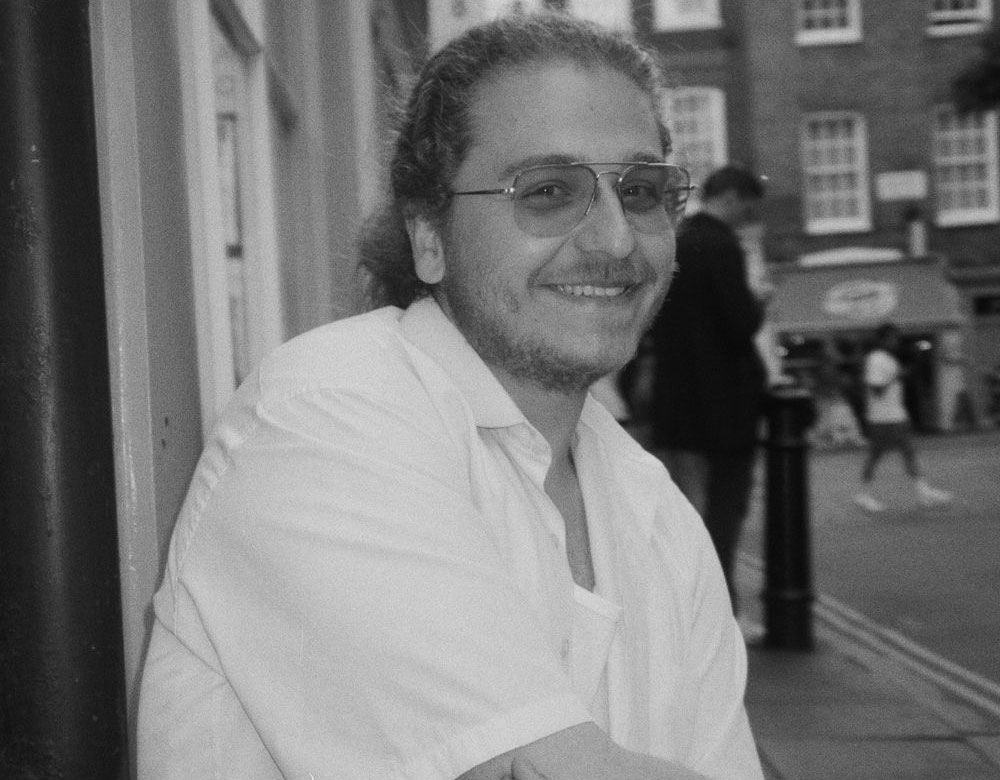
What initially drew you to the multiple exposure technique in film photography?
To be honest, I’m not entirely sure. The first time it happened was actually by accident—when I got my scans back from one of my early rolls, I noticed that a photo of my friend had been layered with another image. At first, I thought my camera was faulty, but everything else looked fine. Then I remembered that my Canon SLR EF-1 (from 1973) has a button that allows for multiple exposures.
I had also seen works in digital art and photography where layering techniques are used—whether through scans, prints, paintings,or other analogue processes. That inspired me to try my own experiment: photographing streets and people, layering it all together. The idea was to create something unified from the different elements of street photography. I wanted to show that even if things look very different on their own, together they can still create something beautiful. I guess it’s that idea of opposites attracting. It became a kind of visual puzzle—trying to fit unrelated parts into a new whole, where contrast becomes harmony rather than conflict.
One photo that stands out is a layered shot where a brutalist concrete building cuts through the frame, intersected by the delicate curve of a Victorian terrace—totally different energies, but they created this unexpected balance. That’s when I realized how powerful those accidents could be.
How do you choose the locations or moments you want to overlay—do you plan them or is it an intuitive process?
Honestly, it’s mostly intuitive—sometimes thought-out, and sometimes just pure accident. In one photo, I tried to frame a street scene on one side and then maybe overlay it with a person in the middle. Some of it worked, and some unexpected elements got into the mix.
I also had the idea of combining the old and new—like the classic Victorian buildings of London with modern towers, or urban scenes with more rural ones. So while a lot of it was based on instinct—thinking “this might look good with that”—there was also technical planning involved. I had to adjust the ASA (film sensitivity) to control which parts of the image would be more or less defined. There were plenty of moments where it didn’t work and I had to cut some images out. It was definitely a lot of trial and error. Sometimes the “mistakes” were more interesting than the planned results, and I started leaning into that unpredictability. It made the process feel alive.
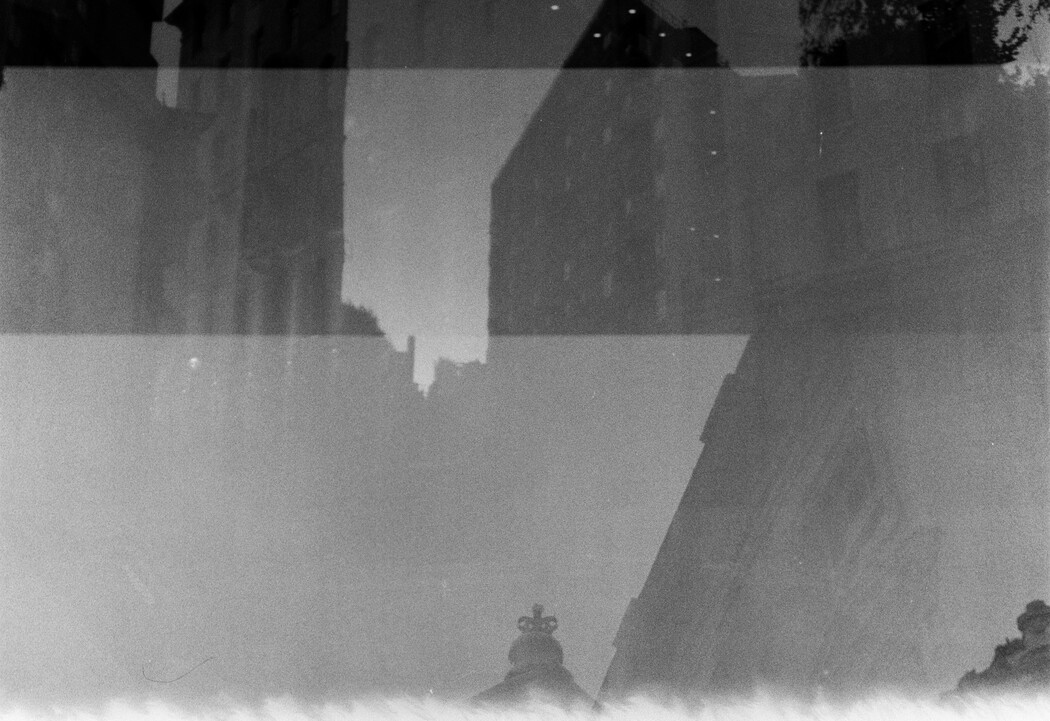 Omar Danial Biuiiuktosun | Street Layers
Omar Danial Biuiiuktosun | Street Layers
Street Layers blurs the line between abstraction and documentary—do you see your work more as emotional interpretation or urban record?
If I really had to choose, I’d say it’s a bit of both. When I try to capture something, it usually starts with an emotional motive. Maybe a street or an object gives me a certain feeling, or I see beauty in something others might overlook. It could be something simple, messy, or even kind of trashy or frayed. A lot of the time, my visuals—whether photography or video—are affected by how I’m feeling on that particular day. That emotional lens shapes how I see the world. But at the same time, certain elements always stay constant in how I approach it. It’s not about documenting a place exactly as it is—it’s about how it feels to exist in that place, in that moment.
So in that way, it becomes emotional storytelling through the language of the street. Even if people don’t know the specific locations, they can relate to the mood or the rhythm of the composition.
Sometimes I’m walking around London and I get this strange realization—something I think anyone who’s lived in one place for a while might relate to. You start to forget to appreciate where you are and how vibrant it really is. You get used to it, or you’re so caught up in work and everyday life that you stop noticing your surroundings.
I’ve lived in London for almost five years now, and every so often, I’ll be walking somewhere and suddenly think—wow, I’m actually living here. In this city where so many things have happened, full of history, full of people with their own lives and places to be. Sometimes I get this weird wave of nostalgia—not just for the city, but for how it felt when I first arrived. Everything was new. It felt unreal. I guess I was documenting a kind of sentimentality as well.
Some of the photos are even quite touristy—like one I took of a phone booth—but that’s honestly how I saw the UK at first, coming from Russia. That classic red phone box was a symbol of this place to me. Coming to a big city felt monumental. I grew up in Moscow, which is also a huge metropolis—bigger than London in size, full of people—but maybe because I was always there, I took the amazement for granted.
What role does imperfection play in your visual storytelling?
I think it’s a big one. I’ve often been called a chaotic person, and while that’s not entirely wrong, I can also be quite controlling in my process. A lot of my life exists in this space of organized chaos. I like a messy vibe, I guess. I find something exciting and honest in imperfection—something that feels complete on its own terms. It’s unique, and it can tell you a lot about a person or a place.
What also helps with the balance between perfection and imperfection is the patience required to do analogue photography or a project like this. Even though my thought process can be chaotic, I still like to feel in control of what I’m doing. But with film, you don’t actually know how the image will come out until the roll is developed and scanned. That waiting process has become a kind of therapy for me. It teaches me patience, and it forces me to give up control—at least for a while. I think that’s where imperfection becomes meaningful. Because no matter how much I plan, I can’t control every detail of how the image will turn out.
In a way, working with multiple exposures on film exaggerates that lack of control even more. You can’t fully predict how two frames will overlap—how the contrast will land, where the details will blur or sharpen. But that’s part of the beauty of it. It’s unpredictable, and it feels alive. Sometimes I only understand what I’ve captured after the scan, and that gap between intention and outcome has taught me a lot.
Also, I think imperfection helps me stay connected to the honesty of the process. It keeps things grounded. When everything is overly polished, it can lose its humanity. Imperfect photos—ones with grain, blur, double exposure mistakes—remind me even if it didn’t go the way I planned, it still says something true.
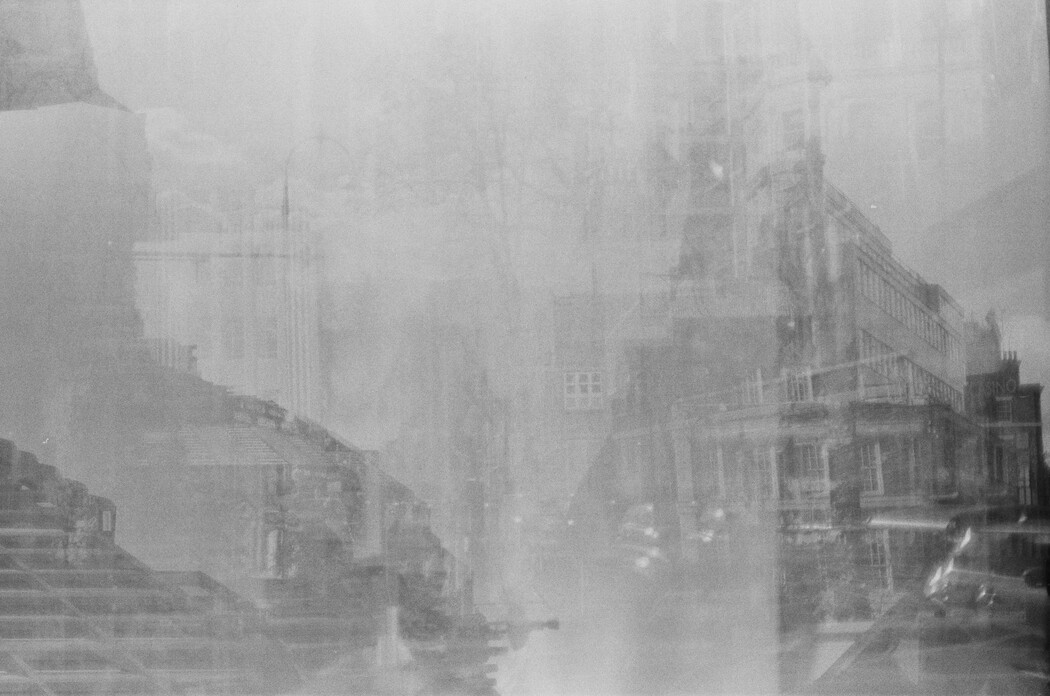 Omar Danial Biuiiuktosun | Street Layers
Omar Danial Biuiiuktosun | Street Layers
In Street Layers, architecture is a recurring motif. What does the built environment represent to you?
I’m not entirely sure, but architecture definitely attracts me. I think the urban environment lets me romanticize my life in a very generic way — me living in a big city. It gives a kind of cinematic feeling, where I can step outside and feel like I’m part of something larger, even if I’m just walking to the shop.
Part of it is the history and the thought process behind how buildings are designed and positioned within their surroundings. From what I understand about architecture, a lot of consideration goes into how a building will suit the already existing environment and how everything will look together. Even if the styles are different, they somehow come together — much like the idea behind my project.
As well as that ,In some ways, it can make me feel very small, like I could get lost in it. Architecture to me feels like a silent storyteller — a physical record of time and culture. Each building, whether old or new, says something about the moment it was made.
How do you balance spontaneity and composition when working with analog film?
I don’t think there is a clear balance. While I do try to compose the image and there’s usually a core idea behind the layers, I don’t see the original frame when I’m shooting the next one. I have to rely on memory and the feeling I had while taking the first shot.
So for me, spontaneity isn’t something that stands in opposition to composition — it’s actually a big part of how the composition forms. I hope that makes sense. It kind of ties back to the question about imperfection and control. In an ideal world, some of the images might have turned out more polished or precise, but because I can’t fully control the outcome, they often end up more chaotic — and somehow still work together in a natural way.
Imperfection becomes part of the process, not something to avoid, but something that adds to the story.
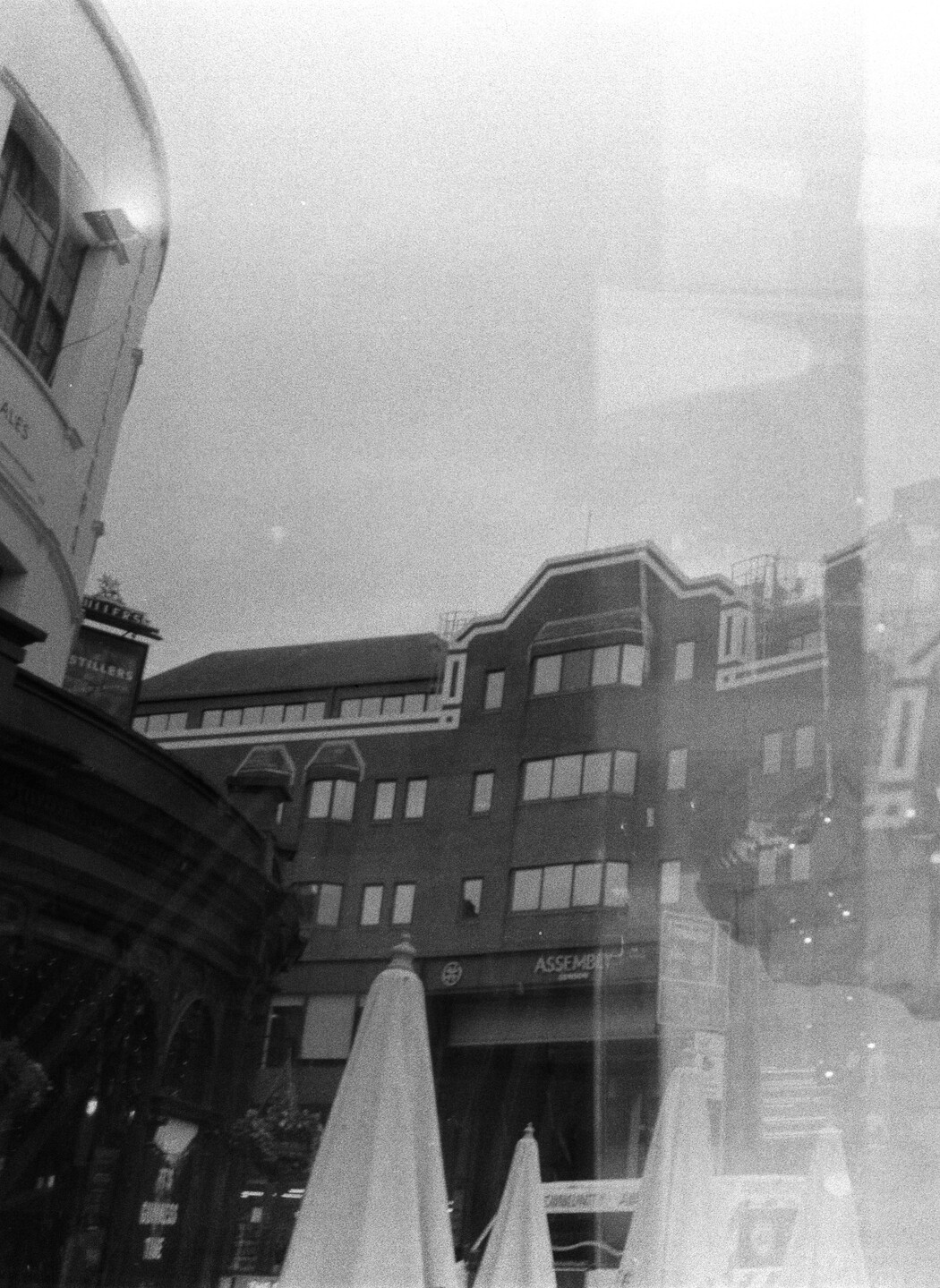 Omar Danial Biuiiuktosun | Street Layers
Omar Danial Biuiiuktosun | Street Layers
Has your background in filmmaking influenced the way you structure photographic narratives?
Yes, definitely. Mise-en-scène is a big part of how I compose photographs. I’ve learned a lot about visual storytelling through filmmaking, especially in cinematography — though I wouldn’t say I’m some high-end professional. Most of what I know comes from personal projects, experiments, and a mix of formal training and self-teaching.
Light is a huge part of that. I’m always thinking about how light frames a subject or gives structure to an image — not just in architectural shots, but across everything I shoot. It’s one of the first things I notice when composing a frame, because light can change the entire feeling of a shot. It creates mood, atmosphere, even a sense of time. In this project, the light isn’t always clean or controlled — because of the layering — but it still does something important. It highlights some parts, drowns out others, and that unpredictability adds to the whole idea of peaceful chaos. I know that sounds a bit dramatic, but it really is the best way to describe it.
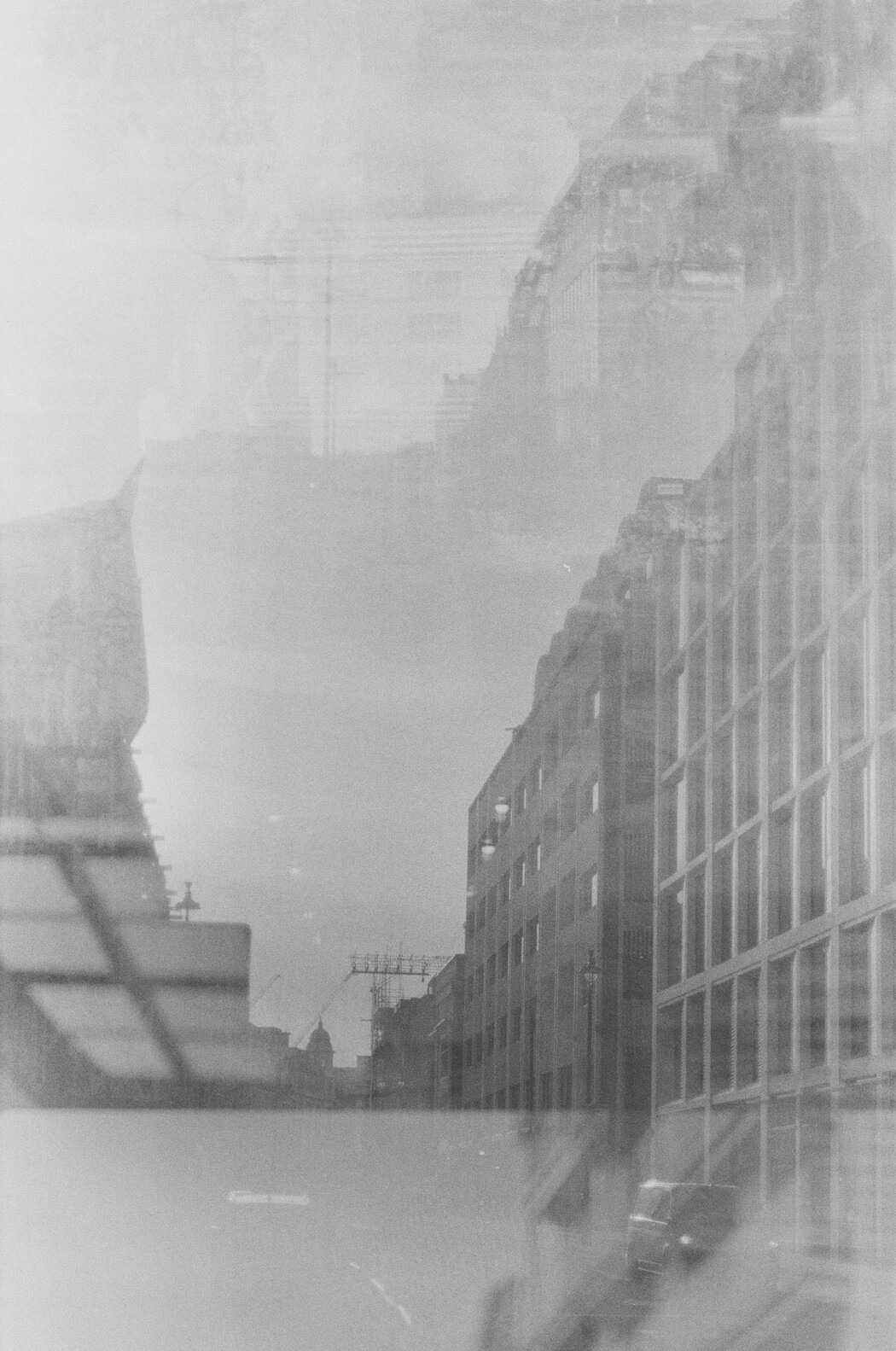 Omar Danial Biuiiuktosun | Street Layers
Omar Danial Biuiiuktosun | Street Layers

Leave a Reply